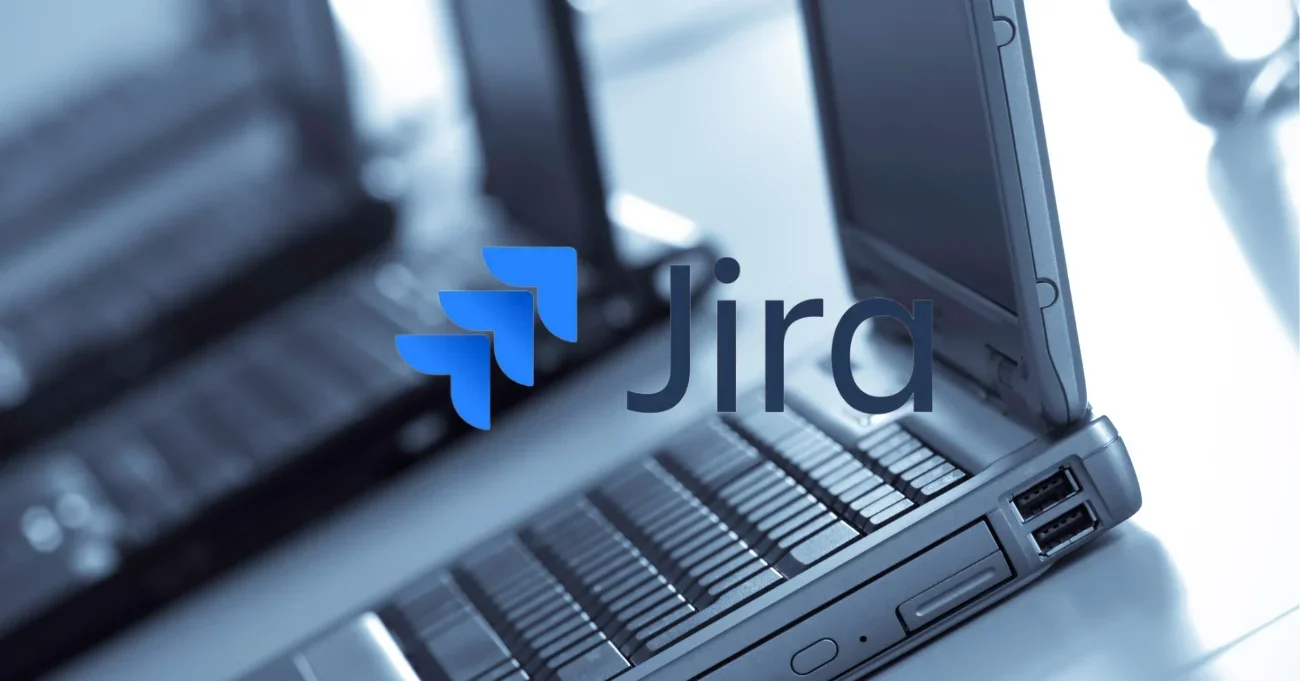Jira plays a vital role in modern project management, making it one of the most popular tools for software development. This versatile tool allows teams to manage everything from issue tracking and task management to bug tracking and sprint planning. With Jira software, teams across industries can customize workflows for their specific needs, whether for agile planning or using a scrum board. Understanding what is Jira used for provides insight into how software teams improve their processes.
At Aloa, we leverage a robust project management tool to ensure smooth collaboration across software development teams. Our clients benefit from custom workflows that match their unique use cases, enhancing team performance. Through our strong network of vetted partners, we provide industry-leading solutions using the best tech, like Jira service management. We help teams focus on their goals with real-time updates and continuous support.
Building on these proven strategies, we’ve created this guide to explore what is Jira used for. You’ll learn about its core features, from agile teams and sprint planning to bug tracking and custom fields and its role in improving workflows. Ultimately, you'll understand how to set up workflows and optimize your team's completion time.
Let's dive in!
What Is Jira Used For? Overview and Importance
Jira is a versatile project management tool widely used in software development and beyond. It helps teams manage tasks, track issues, and streamline workflows. Understanding what is Jira used for is essential for optimizing team collaboration, improving productivity, and efficiently managing various projects across industries.
Jira in Modern Tech Environments
Jira, developed by Atlassian, is a powerful, agile project management tool used to manage projects and track work. It is widely used in various use cases, from bug fixes to agile project management. Teams across industries, including marketing teams, rely on Jira’s ability to provide real-time updates and visibility into their projects.
Jira integrates seamlessly with many platforms, allowing teams to manage dependencies and ensure smooth workflows. Common integrations include:
- GitHub: Enables teams to link Jira issues to GitHub repositories, improving collaboration on development projects.
- Confluence: Teams use this documentation tool alongside Jira to create a central knowledge base for projects.
- Slack: Integrates with Jira for instant notifications and updates, making communication between team members easier.
- Bitbucket: Allows teams to track work and review code within the same platform.
- Trello: A simple Kanban board for managing less complex projects, which syncs with Jira for transparency and better project visibility.
Jira’s scalability ensures that teams, from startups to large companies, can simultaneously manage a single or multiple complex projects. Its plugin marketplace offers customization options that support best practices, automation, and setup tailored to the team's needs.
Why Jira Stands Out Among Project Management Tools
Jira outshines other project management software due to its comprehensive features. When considering what Jira is used for, the platform stands apart in several ways:

- Versatility: Jira adapts to various industries and project types, making it ideal for software development, marketing, IT services, and more. Its flexibility allows teams to customize workflows and address different types of projects.
- Real-Time Collaboration: Jira offers real-time updates, ensuring teams stay in sync. From tracking work items to updating backlogs, the platform supports seamless teamwork.
- Templates and Methodologies: Jira provides templates for Scrum, Kanban, and hybrid methodologies, saving teams less time in configuration. This boosts efficiency across diverse project settings.
- Customizable Dashboards and Metrics: Teams can tailor dashboards, track velocity, monitor milestones, and configure alerts for better project tracking and decision-making. Jira’s metrics help evaluate performance.
- Mobile App Access: Jira’s mobile app allows teams to manage tasks from anywhere, making it easy to keep up with epics, sub-tasks, and deadlines even while on the go.
Jira’s broad reach is amplified with the Atlassian Marketplace, which offers additional apps for enhanced functionality. Teams can choose from thousands of tools to customize their workflows further.
The Impact of Jira on Team Collaboration and Productivity
Understanding what Jira is used for can significantly improve team collaboration and productivity. Jira helps teams manage tasks, track progress, and streamline communication all in one platform. With its wide range of features, Jira's functionality and uses fit a variety of industries and team structures, providing a significant boost to efficiency.
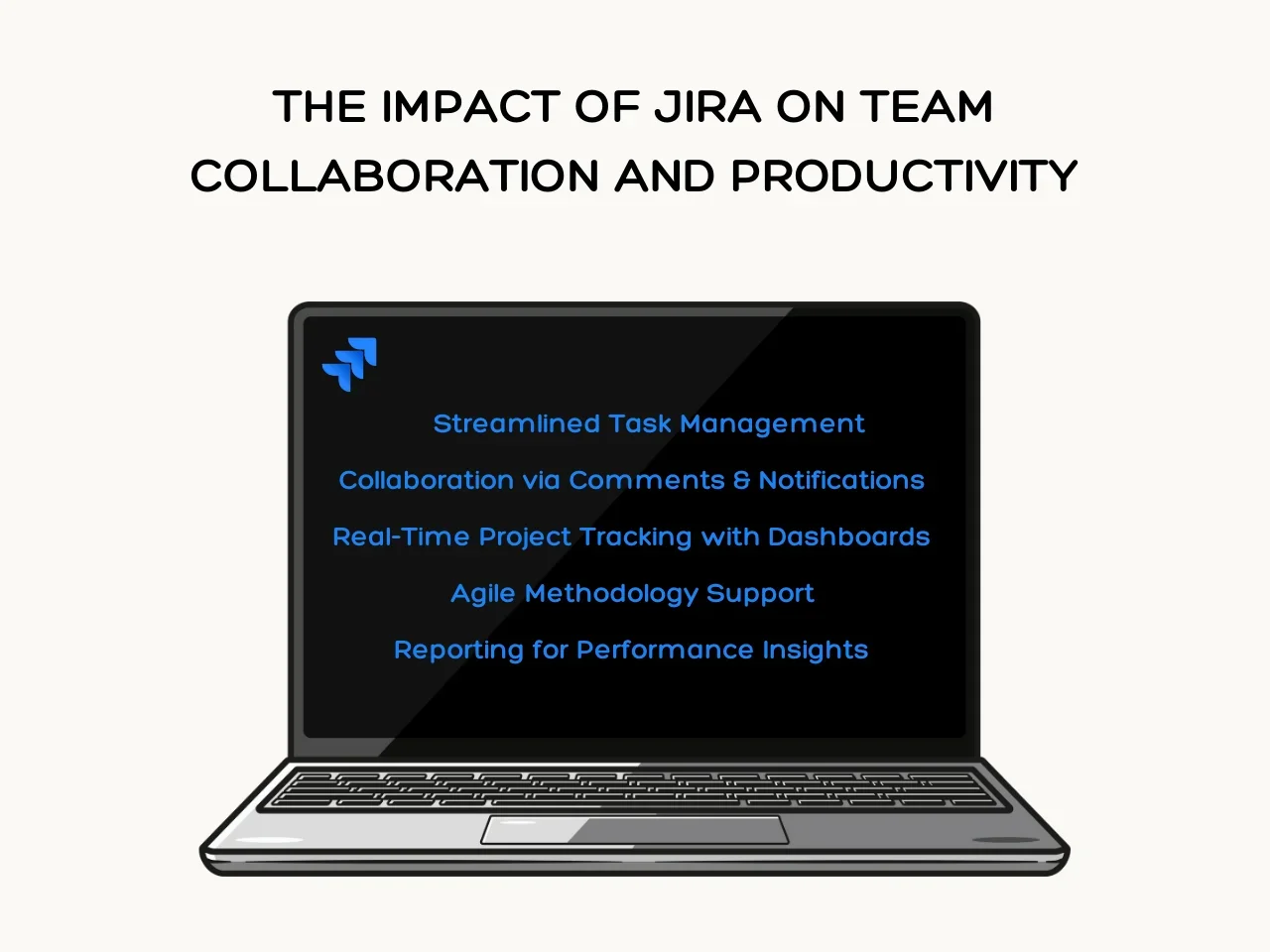
1. Streamlined Task Management
One key use of Jira software is task management. Teams can assign tasks, set priorities, and track progress, ensuring everyone knows their responsibilities and deadlines. Jira's functionality allows team members to focus on essential tasks without confusion. Task updates and notifications improve team efficiency and communication.
2. Enhanced Collaboration Through Commenting and Notifications
A practical use of Jira involves its commenting system, which boosts collaboration. Team members can leave notes, updates, or feedback on specific tasks, creating a central hub for communication. Notifications keep the team informed of changes, fostering seamless teamwork without needing additional communication tools.
3. Real-Time Project Tracking with Dashboards
Jira use cases also include real-time tracking of project progress through customizable dashboards. These dashboards display the status of tasks and workflows, providing a transparent view of the team's work. This feature supports decision-making and allows teams to adjust their strategies when needed.
4. Agile Methodology Support
One key use of Jira software is its support for Agile methodologies like Scrum and Kanban. Jira's boards and sprints help teams manage workloads in short cycles, enhancing productivity. Teams can visualize their progress and quickly adjust to keep the project on track.
5. Reporting for Performance Insights
A vital application of Jira software is its reporting feature. Teams generate reports on task completion, workflow bottlenecks, and overall productivity. These reports provide insights into team performance, allowing managers to improve processes. It’s one of the most practical ways to use Jira to drive better outcomes.
The Core Features of Jira
Jira is a versatile project management tool used across industries to streamline workflows and improve task management. Its flexibility, customization, and broad functionality make it ideal for teams of any size. In this section, we’ll explore what Jira is used for, diving into its key features that enhance productivity and efficiency.
1. Boards for Visual Project Tracking
Jira boards play a crucial role in its functionality, providing teams with a visual way to monitor progress. Whether using Scrum or Kanban, boards assist teams in effectively managing workflows and tasks.
Scrum Boards
One of the key uses of Jira software is Agile project management, where teams use Scrum boards to manage tasks within sprints. Each sprint is time-boxed, with teams committing to completing a set amount of work. Here are some ways to use Jira Scrum boards:
- Sprint Planning: Plan sprints with defined goals and prioritize tasks from the backlog.
- Track Progress: Use the board to monitor tasks as they move from “To Do” to “In Progress” and “Done.”
- Improvement Insights: Evaluate past sprints to improve future workflows.
Scrum boards benefit teams that thrive on time-based deliverables, helping them stay focused and organized.
Kanban Boards
Kanban boards, another application of Jira software, are designed for teams that need to manage a continuous flow of work. Unlike Scrum, Kanban focuses on visualizing tasks and ensuring work progresses smoothly.
- Task Visualization: Tasks are displayed in columns representing different stages of completion, making it easy to identify potential bottlenecks.
- Work In Progress (WIP) Limits: Set limits on the number of tasks in any stage to prevent overload and ensure smooth task transitions.
Kanban boards are an excellent fit for teams that need to manage ongoing tasks without the constraints of time-boxed sprints.
Cross-Project Boards
Jira also supports cross-project boards, making it easier to manage complex projects involving multiple teams or departments. These boards offer a broader overview, pulling data from various sources and allowing for efficient cross-team collaboration.
- Executive Summaries: Provide leadership with a top-level view of all project progress.
- Team-Specific Workstreams: Teams can track progress across projects in one centralized board.
This flexibility in tracking is one of the key uses of Jira software, helping businesses manage intricate workflows more efficiently. Jira boards offer more than just task tracking. Teams can monitor dependencies, assign ownership to ensure accountability, and quickly identify blockers to address issues. These features make Jira a powerful tool for optimizing workflows and keeping projects on track.
2. Issue & Ticket Management for Efficient Problem-Solving
Jira’s issue and ticket management features are essential for teams focused on problem-solving and maintaining project momentum. These ticketing tools help teams identify, track, and resolve issues quickly and efficiently, ensuring that no task or problem goes unnoticed.
Identifying Issues with Precision
One of the key uses of Jira software is its ability to help teams identify issues early. Whether it's a system bug, a task that needs attention, or a process that requires improvement, Jira’s issue-tracking functionality ensures that every problem is recorded. Some ways to use Jira for identifying issues include:
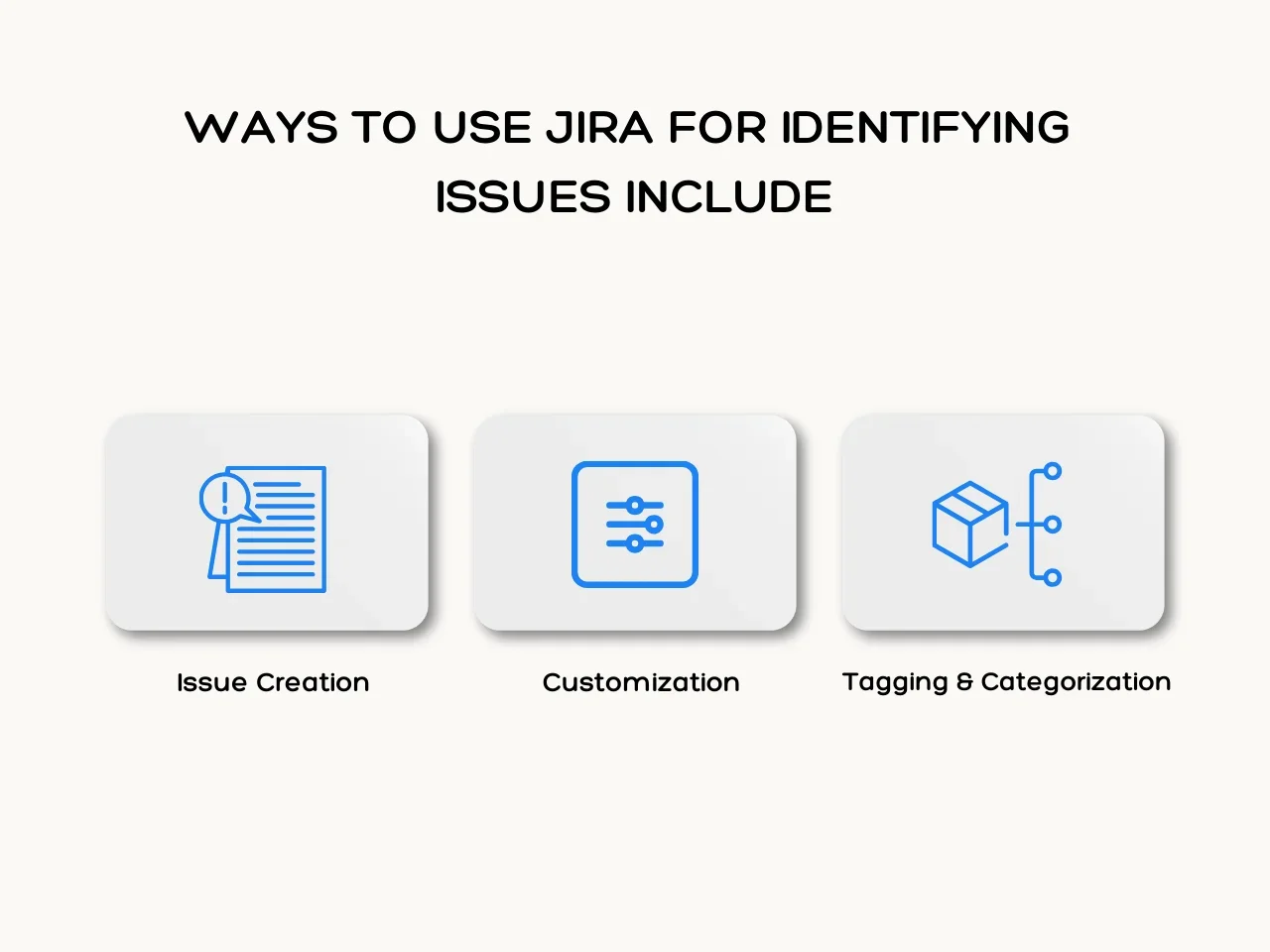
- Issue Creation: Easily log problems as they arise with detailed descriptions, priority levels, and deadlines.
- Customization: Tailor issue types (bugs, tasks, or features) based on your team’s needs, ensuring clarity in what needs to be addressed.
- Tagging and Categorization: Group or categorize related issues, allowing team members to locate specific problems quickly.
Capturing all issues as they arise, teams ensure nothing is overlooked, enabling more efficient resolutions.
Tracking Issues for Continuous Progress
Real-time issue tracking is another practical use of Jira. With its ticket management system, Jira allows teams to follow the progress of every issue from creation to completion, providing full visibility. Here’s how Jira’s functionality and uses for tracking can enhance project flow:
- Progress Updates: As team members work on an issue, they can update the ticket to reflect current status (e.g., “In Progress,” “On Hold,” or “Resolved”).
- Notifications: Automatically notify relevant team members when an issue is assigned, updated, or resolved.
- Prioritization: Organize tickets based on urgency, ensuring that critical issues are resolved first.
Jira’s issue and ticket management tools are central to its overall effectiveness as a project management solution. These features ensure that issues are identified early, tracked effectively, and resolved quickly, contributing to smooth project execution.
Through these functionalities, Jira provides clarity and accountability, empowering teams to solve problems efficiently and keep projects on track.
3. Integration Capabilities with Other Software
Jira’s integration with various software tools significantly enhances project management efficiency. Its seamless connections with tools like code repositories, continuous integration tools, and other third-party applications allow teams to streamline workflows and maintain productivity across different platforms.
Integration with Code Repositories
Jira integrates smoothly with popular code repositories like GitHub, GitLab, and Bitbucket. This integration enables teams to:
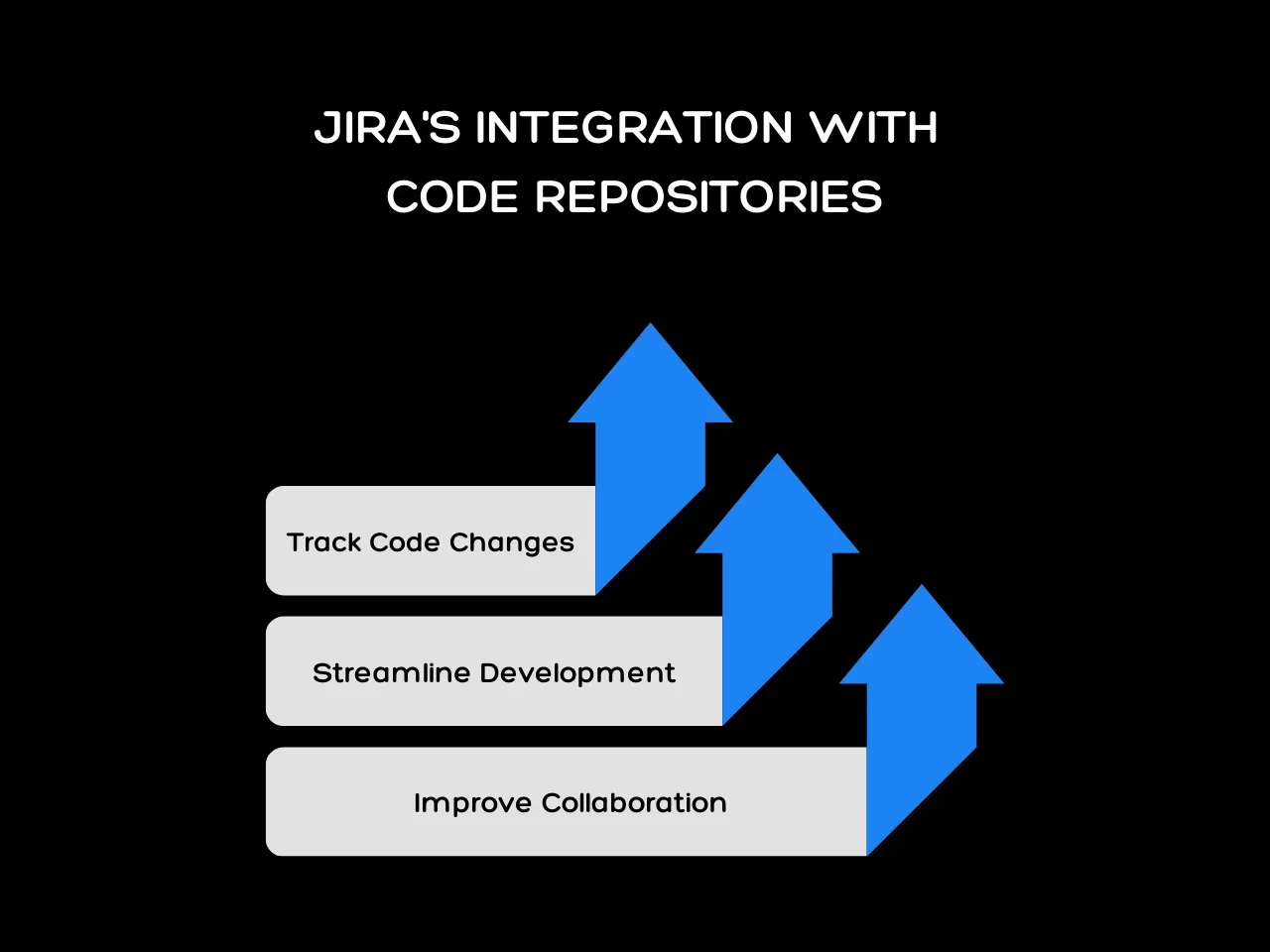
- Track Code Changes: Automatically link Jira issues to specific commits, branches, or pull requests, providing a clear link between the code and the task.
- Streamline Development: Developers can transition Jira tasks through stages as code progresses, ensuring that progress is updated in real-time.
- Improve Collaboration: The integration fosters collaboration between developers and non-technical team members, giving everyone access to the most up-to-date information on both code and tasks.
This connection between code and tasks is one of Jira’s most practical uses. It allows teams to maintain project clarity without switching between multiple tools.
Integration with Continuous Integration Tools
Continuous integration (CI) is a core element of modern software development, and Jira’s integration with CI tools helps automate testing and deployment processes. These integrations:
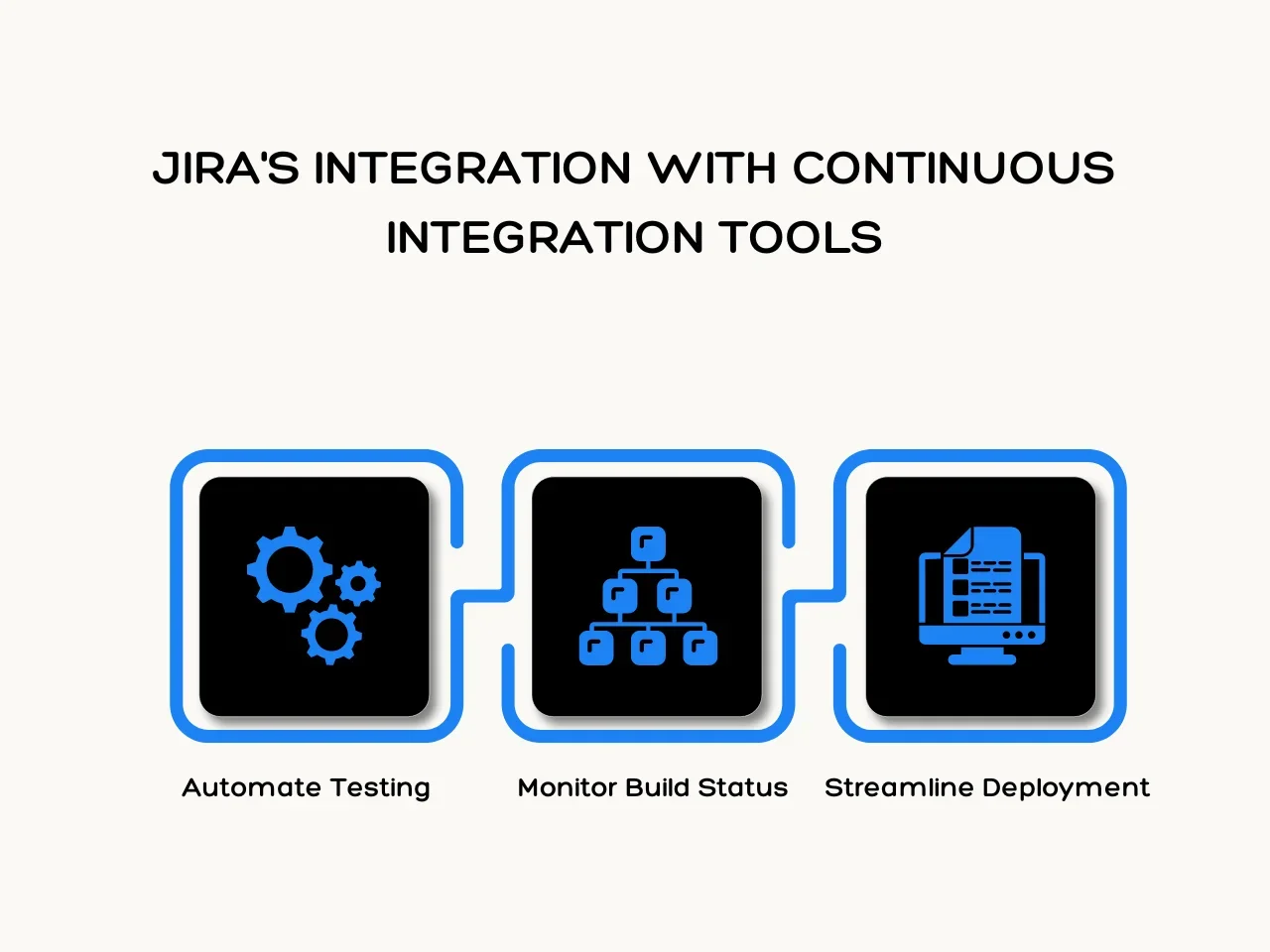
- Automate Testing: Task updates trigger automated tests, allowing teams to detect and address issues quickly.
- Monitor Build Status: You can view the status of builds directly within Jira, ensuring immediate identification and resolution of any failures.
- Streamline Deployment: Connect completed tasks to deployment pipelines, ensuring smooth development and production transitions.
Through these integrations, Jira helps improve project management efficiency, minimizing manual effort and reducing the risk of errors.
Jira’s integration capabilities with various software tools enhance its functionality and provide powerful ways to streamline project management. By connecting Jira with code repositories, continuous integration tools, and communication platforms, teams can maintain productivity, improve collaboration, and ensure efficient and transparent project management.
The Role of Workflows in Jira
Jira’s workflows play a crucial role in streamlining project management. They offer structured processes for task completion, ensuring that teams follow clear steps from start to finish. Let’s explore how workflows can be customized, automated, and optimized for better project management.
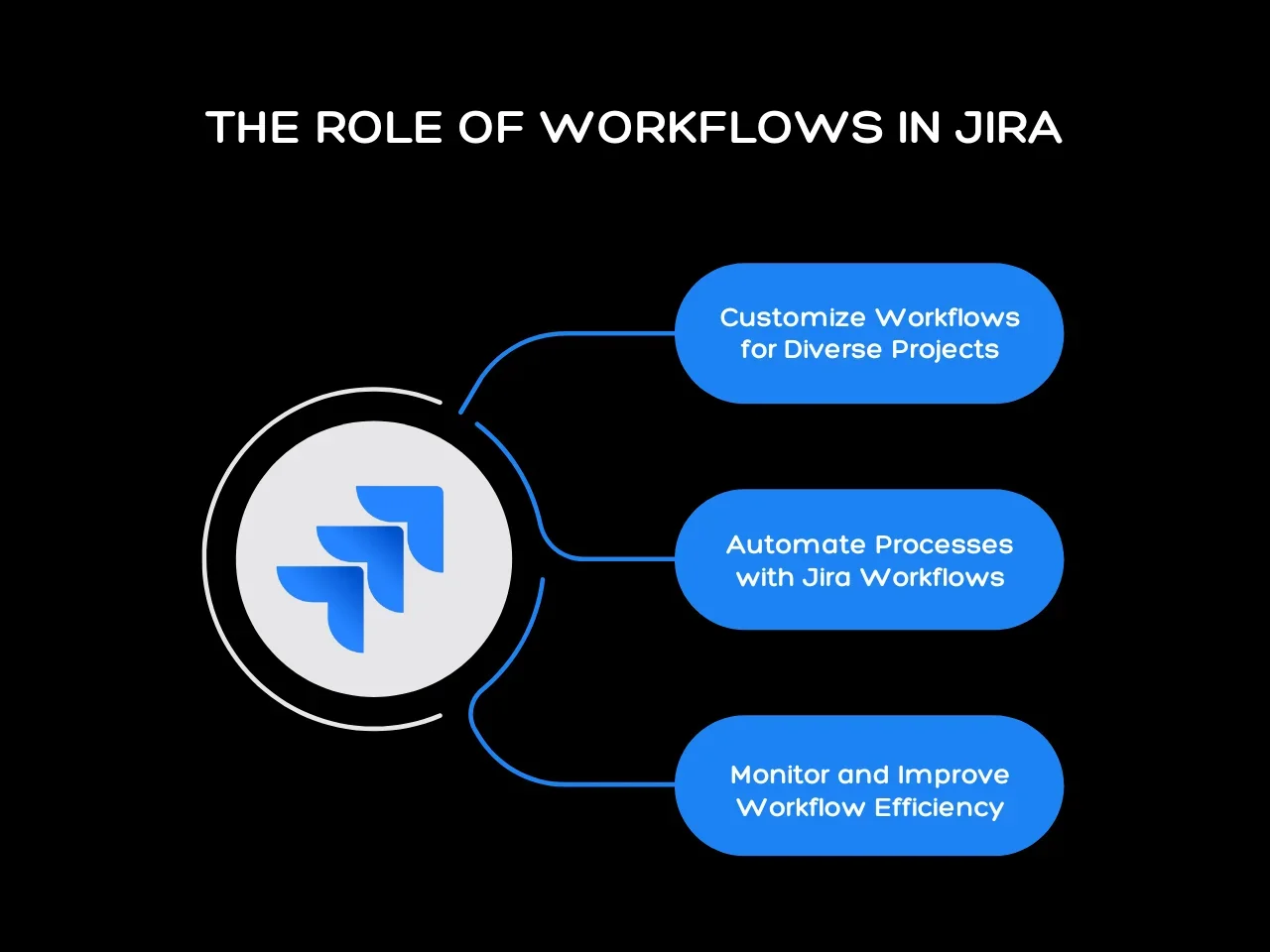
1. Customize Workflows for Diverse Projects
One key use of Jira software is its ability to customize workflows for different projects. Whether your team handles software development, marketing, or customer support, Jira lets you create workflows that suit specific needs. Customizable stages, transitions, and permissions allow teams to shape workflows according to their unique project requirements. This flexibility is one of the top applications of Jira software across industries.
2. Automate Processes with Jira Workflows
Automation is another essential feature of Jira’s workflow system. Teams can automate repetitive processes like task assignments and status updates, reducing manual effort. This boosts productivity and ensures tasks move smoothly through each stage. Automation is one of the ways to use Jira, which helps teams focus on more critical work rather than administrative tasks.
3. Monitor and Improve Workflow Efficiency
Consider the real-time monitoring tools of Jira software. Jira offers dashboards and reports that track workflow performance. Teams can spot bottlenecks, measure efficiency, and make necessary improvements. These practical uses of Jira enable teams to optimize their processes and deliver projects more effectively.
Key Takeaway
Understanding what is Jira used for reveals its wide-ranging applications across various industries, from software development to marketing. Teams use Jira to track tasks, manage projects, and improve efficiency. Beyond simple task tracking, Jira also offers solutions for collaboration, workflow management, and integration with other essential tools.
As a project management tool, Jira boosts team collaboration and productivity. Its flexible boards, issue tracking, and integration capabilities are essential for modern project management. Whether your team works in sprints or prefers continuous workflows, Jira adapts to different needs, enhancing team communication and ensuring that tasks move smoothly from start to finish.
So, what is Jira used for in your business? At Aloa, we help teams implement the right tools for successful project outcomes. From tailored workflows to seamless integrations, we’ll guide you through Jira’s practical uses. Explore Aloa’s blogs for more insights on maximizing project management with Jira.

